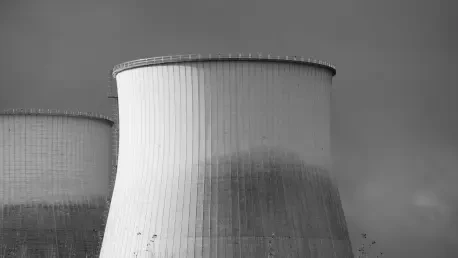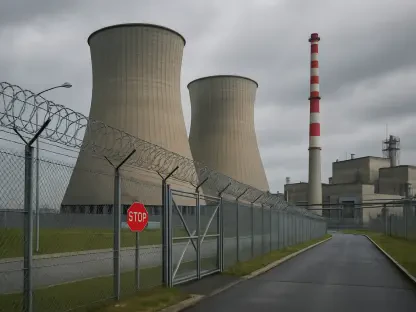In a significant move towards transforming energy landscapes, the U.S. Nuclear Regulatory Commission (NRC) has accelerated the timeline for the approval of X-energy’s innovative small modular reactor, the Xe-100, slated for construction at Dow’s UCC Seadrift petrochemical plant in Texas. This streamlined review process, reduced from an average of 36 months to just 18, exemplifies the proactive engagement and detailed preparatory efforts made since 2018. Although the regulatory momentum is strong, Dow seeks to make a final investment decision by 2028, dovetailing with the NRC’s evaluation of its operating license application, a crucial phase in the NRC’s Part 50 licensing process.
Transitioning to Advanced Nuclear Energy
A Strategic Shift from Fossil Fuels
The impending replacement of Dow’s existing cogeneration plant with X-energy’s Xe-100 represents a pivotal shift from traditional fossil fuels to advanced nuclear technologies, aligning with the broader energy sector’s push toward cleaner sources. This is not just about swapping fuel types; it signals a systemic transition, highlighting nuclear’s efficiency in addressing rising clean energy demands. With ongoing initiatives by X-energy’s subsidiary, TRISO-X, to prepare for the production of specialized nuclear fuel in Tennessee, the focus on supply chain and workforce development underscores the intricate landscape of nuclear energy readiness. These efforts are crucial, as they ensure robust infrastructural frameworks and bolster the ability to deliver the sophisticated fuel necessary for Xe-100 operations.
Legislative and Financial Support
The project’s potential to utilize technology-neutral investment tax credits from the Inflation Reduction Act of 2022 further reinforces legislative endorsement for sustainable energy solutions. This shows how regulatory frameworks, market incentives, and financial feasibility are being intricately tied to advancements in nuclear technology. X-energy’s collaboration with government and regulatory bodies reflects a well-coordinated effort to harness legal and fiscal frameworks that support environmental initiatives. Such measures aim to ensure that new energy forms are economically viable without compromising ecological integrity, paving the way for widespread adoption of nuclear advancements.
Advancements in Nuclear Reactor Designs
X-energy’s Contributions to Industry Trends
The discussion surrounding the commercial rollout of X-energy’s Xe-100 reactor highlights a larger industry alignment towards advanced nuclear designs. The NRC’s expedited approval process mirrors the enthusiasm for embracing innovative technologies like TerraPower’s Natrium, under the DOE’s $2.5 billion Advanced Reactor Demonstration Program. This program seeks to pioneer next-generation nuclear solutions, indicating a forward-looking vision propelling the nuclear sector into the future energy landscape. X-energy, alongside other contributors in the program, is pivotal in this endeavor, reflecting industrial determination to innovate and redefine nuclear capabilities.
Balancing Innovation and Infrastructure
While technological advancements are paramount, ensuring infrastructural solidity remains essential for emerging nuclear solutions. This balance between innovation and readiness involves comprehensive planning and strategic partnerships, such as those visible in X-energy’s endeavors. Integrating advanced designs requires not only technical proficiency but also a synergistic alignment with existing energy systems to maximize efficiency and safety. Infrastructure readiness entails delivering reliable supply chain mechanisms and fostering capable workforces, which are indispensable in transitioning to advanced nuclear systems seamlessly.
The Future Outlook for Nuclear Energy
Sustainable Development and Energy Reliability
In the broader context, the narrative unfolding in the nuclear energy sector underscores an imperative towards sustainable development, energy reliability, and economic viability. Collaborative efforts among government agencies, energy firms, and regulatory bodies highlight a consensus-driven pursuit of sustainable energy solutions. This vision reflects the industry’s commitment to achieving ecological balance while ensuring energy security, framing nuclear technology as a central component in modern energy systems. The types of strategic partnerships and proactive regulatory engagement seen here are vital for realizing the full potential of nuclear innovations.
Strategic Implications for the Energy Sector
The swift progression of X-energy’s Xe-100 reactor not only signifies technological advancement but also invites deeper contemplation on strategic implications for the energy sector. As regulatory environments adapt to facilitate such transitions, they model frameworks that could set precedents for future energy projects. These developments not only focus on immediate energy solutions but also resonate with long-term policies that prioritize sustainable growth and technological resilience. The insights gained from fast-tracking nuclear reactor approvals can inform strategies aimed at diversifying energy portfolios and catalyzing ecological stewardship in the power landscape.
Conclusion: Reflecting on Energy Transformation
In a notable advancement in reshaping the energy sector, the U.S. Nuclear Regulatory Commission (NRC) is fast-tracking the approval of X-energy’s small modular reactor, the Xe-100. This reactor is set to be built at Dow’s UCC Seadrift petrochemical plant in Texas. The NRC has notably shortened the review process from the typical 36 months to just 18 months, highlighting significant proactive preparation and engagement since 2018. Despite this regulatory momentum, Dow plans to make a final investment decision by 2028, aligning with the NRC’s assessment of its operating license application. This evaluation is an integral part of the NRC’s Part 50 licensing framework, crucial for advancing nuclear technology. This move underscores the broader push for innovative energy solutions, facilitating a shift towards more sustainable and efficient power sources, reflecting both regulatory agility and concerted industry efforts to revolutionize the energy landscape.









